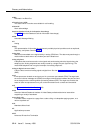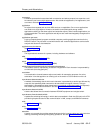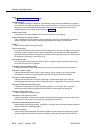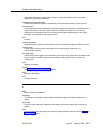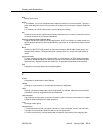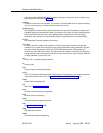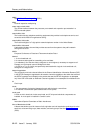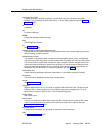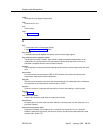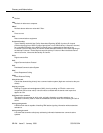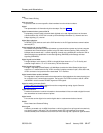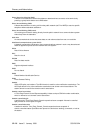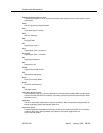
Glossary and Abbreviations
555-230-024GL-12 Issue 5 January 1998
CDRU
See Call Detail Recording utility (CDRU).
CEM
Channel-expansion multiplexing
center-stage switch (CSS)
The central interface between the processor port network and expansion port networks in a
CSS-connected system.
central office (CO)
The location housing telephone switching equipment that provides local telephone service and
access to toll facilities for long-distance calling.
central office (CO) codes
The first three digits of a 7-digit public-network telephone number in the United States.
central office (CO) trunk
A telecommunications channel that provides access from the system to the public network
through the local CO.
CEPT1
European Conference of Postal and Telecommunications Rate 1
channel
1. A circuit-switched call.
2. A communications path for transmitting voice and data.
3. In wideband, all of the time slots (contiguous or noncontiguous) necessary to support a call.
Example: an H0-channel uses six 64-kbps time slots.
4. A DS0 on a T1 or E1 facility not specifically associated with a logical circuit-switched call;
analogous to a single trunk.
channel negotiation
The process by which the channel offered in the Channel Identification Information Element (CIIE)
in the SETUP message is negotiated to be another channel acceptable to the switch that receives
the SETUP message and ultimately to the switch that sent the SETUP. Negotiation is attempted
only if the CIIE is encoded as
Preferred
. Channel negotiation is not attempted for wideband calls.
CI
Clock input
circuit
1. An arrangement of electrical elements through which electric current flows.
2. A channel or transmission path between two or more points.
circuit pack
A card on which electrical circuits are printed, and IC chips and electrical components are
installed. A circuit pack is installed in a switch carrier.
CISPR
International Special Committee on Radio Interference
Class of Restriction (COR)
A feature that allows up to 64 classes of call-origination and call-termination restrictions for voice
terminals, voice-terminal groups, data modules, and trunk groups. See also Class of Service
(COS).



